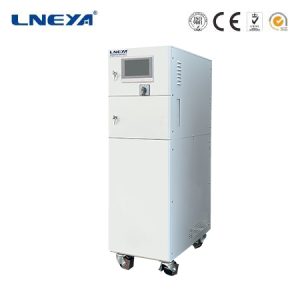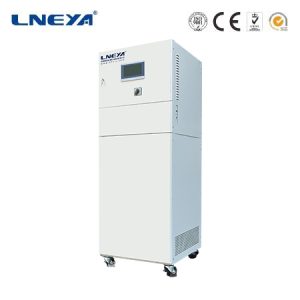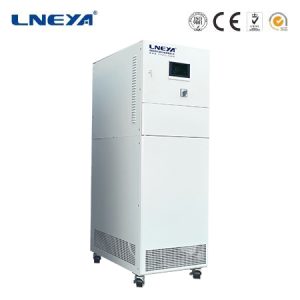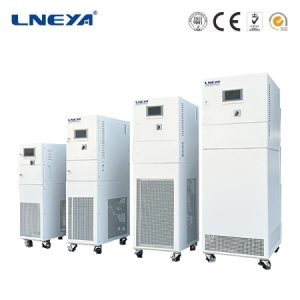Emulsifier Heating Process
Contactez-nous dès aujourd'hui pour une solution parfaite de contrôle de la température
In fluid mixing industrial production, most powder-liquid, solid-liquid, and liquid-liquid mixing require multiple processes of mechanical equipment to meet the required standards of the product. These processing steps often include: heating, dissolving, dispersing, stirring, homogenizing, emulsifying, sterilization, cooling, etc. Except for some cold-processed products, most products require a heating process during the mixing process. The heating process often requires the product to be fine, uniform, well dispersed, stable, etc. The heated materials of thermal processing products can be better sheared, homogenized and emulsified, allowing the product quality to reach a better state.
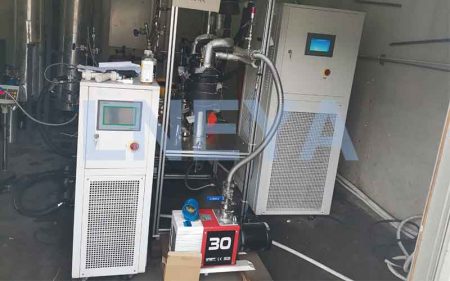
What are the heating methods of emulsifier?
1. Electric heating method
Among the emulsifier heating methods, electric heating is a common heating method. The electric heating method usually uses an electric heating rod installed in the emulsification tank to heat the medium in the interlayer of the emulsification tank: water or thermal oil. After the medium is heated, it transfers heat to the materials in the emulsification tank. The electric heating emulsifier has a fast heat transfer speed and uses a thermocouple to measure the temperature and connect it to a temperature controller to measure and control the temperature. The temperature control is adjustable and convenient; the temperature measurement is accurate. This heating method is convenient, hygienic, economical, safe and has a long heat preservation time.
2. Steam heating method
In some large-scale emulsifier equipment, or in situations where the process has temperature or other requirements, steam heating is often used to heat the materials. This heating method usually requires the customer to have a steam source, such as an industrial boiler. If there is no steam source, additional steam generator equipment is required to generate steam in advance through electrical heating for reuse. This heating method has fast heating speed, easy use and cooling, and can also be used for steam sterilization process. However, since this heating method creates pressure on the emulsification pot of the high-shear vacuum homogenizing emulsifier, it is often necessary to heat the pot with steam into the pressure vessel through an enterprise with a pressure vessel license to ensure production safety. Therefore, this heating method is relatively expensive.
In the production process of some products, standard electric heating and steam heating cannot meet the temperature requirements. External heating equipment can also be optional, such as external mold temperature controllers, chillers and other auxiliary equipment. To sum up, generally speaking, electric heating emulsifiers are more economical and affordable, and the heating effect and other aspects are guaranteed. From the perspective of cost, electric heating is more practical and therefore has a wider range of uses. Steam heating emulsifier is suitable for situations with large-scale output or special process requirements. In the production of products in some industries, especially the pharmaceutical industry that requires steam sterilization, steam heating is also commonly used.
Courriel : info@lneya.com ID WeChat : +8615251628237 WhatsApp : +86 17851209193
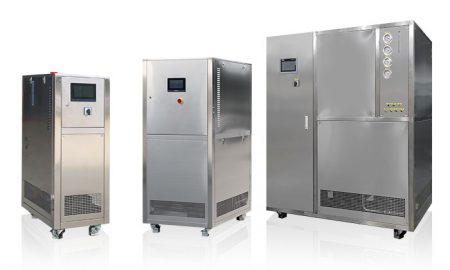
Systèmes de refroidissement et de chauffage (série SUNDI)
Plage de contrôle de la température : -120°C à +350°C
Application : Réacteurs divers (microcanaux, réacteurs en verre, réacteurs à double enveloppe, etc.), système de distillation ou d'extraction, laboratoire, université, institut de recherche, aérospatiale, industrie automobile, test de semi-conducteurs et d'électricité, industrie chimique, pharmaceutique, pétrochimique, biochimique, médicale, hospitalière, atelier de R&D, aérospatiale, biologique et autres industries.
| Plage de température | Série -10 ~ +150°C | Série -25 ~ +200°C | Série -25 ~ +300°C | Série -45 ~ +250°C | Série -45 ~ +300°C | Série -60 ~ +250°C | Série -60 ~ +300°C | Série -70 ~ +250°C | Série -80 ~ +250°C | Série -90 ~ +250°C | Série -100 ~ +100°C | ||
| Capacité de refroidissement | 1,5 ~ 15kW | 1 ~ 200kW | 1 ~ 200kW | 0,45 ~ 200kW | 0,9 ~ 25kW | 0,25 ~ 60kW | 0,75 ~ 25kW | 0,4 ~ 15kW | 0,3 ~ 80kW | 0,2 ~ 80kW | 0,45 ~ 80kW | ||
| Note : Toute plage de température de -150℃ ~ +350℃ et toute capacité de refroidissement peuvent être personnalisées. | |||||||||||||
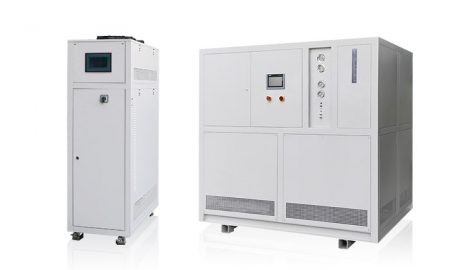
Systèmes de refroidissement et de chauffage (série WTD)
(Micro canal / réacteurs tubulaires spécialisés)
Plage de contrôle de la température : -70°C à +300°C
Conception spécialisée pour les microcanaux (faible capacité de rétention des liquides, forte capacité d'échange thermique, système de circulation à forte perte de charge).
| Plage de température | -70°C ~ +300°C | -45°C ~ +250°C | -70°C ~ +200°C | ||||||
| Capacité de refroidissement | 1,1 ~ 7,5kW | 1,5 ~ 5,5kW | 11 ~ 50kW | ||||||
| Note : Toute plage de température de -150℃ ~ +350℃ et toute capacité de refroidissement peuvent être personnalisées. | |||||||||
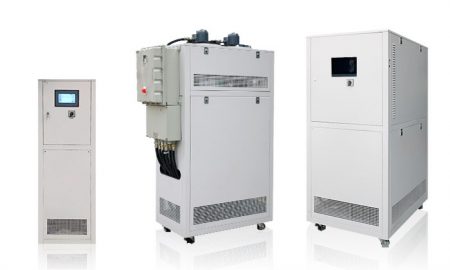
Circulateurs de chauffage et de refroidissement
Plage de contrôle de la température : -45°C à +250°C
Application : Réacteurs divers (microcanaux, réacteurs en verre, réacteurs à double enveloppe, etc.), système de distillation ou d'extraction, laboratoire, université, institut de recherche, aérospatiale, industrie chimique, pharmaceutique, pétrochimique, biochimique, médicale, hospitalière, atelier de R&D, aérospatiale, biologique et autres industries.
| Plage de température | Série -25°C ~ +200°C | Série -45°C ~ +250°C | |||||||
| Capacité de refroidissement | 1 ~ 15kW | 0,25 ~ 15kW | |||||||
| Note : Toute plage de température de -150℃ ~ +350℃ et toute capacité de refroidissement peuvent être personnalisées. | |||||||||
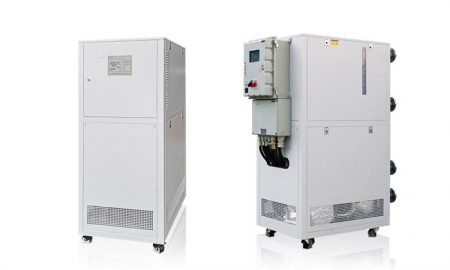
Circulateurs de chauffage
Plage de contrôle de la température : +50°C à +300°C
Note : La série UC peut contrôler la température du fluide caloporteur. La série UST peut non seulement contrôler la température du fluide caloporteur, mais aussi la température du matériau de réaction.
| Plage de température | +50°C ~ +170°C (série UC) | +50°C ~ +300°C (série UC) | +50°C ~ +300°C (série UST) | ||||||
| Capacité de chauffage | 5,5 ~ 15kW | 3,5 ~ 130 kW | 3,5 ~ 95kW | ||||||
| Note : Toute plage de température de -150℃ ~ +350℃ et toute capacité de refroidissement peuvent être personnalisées. | |||||||||
 LNEYA
LNEYA
 简体中文
简体中文














































































